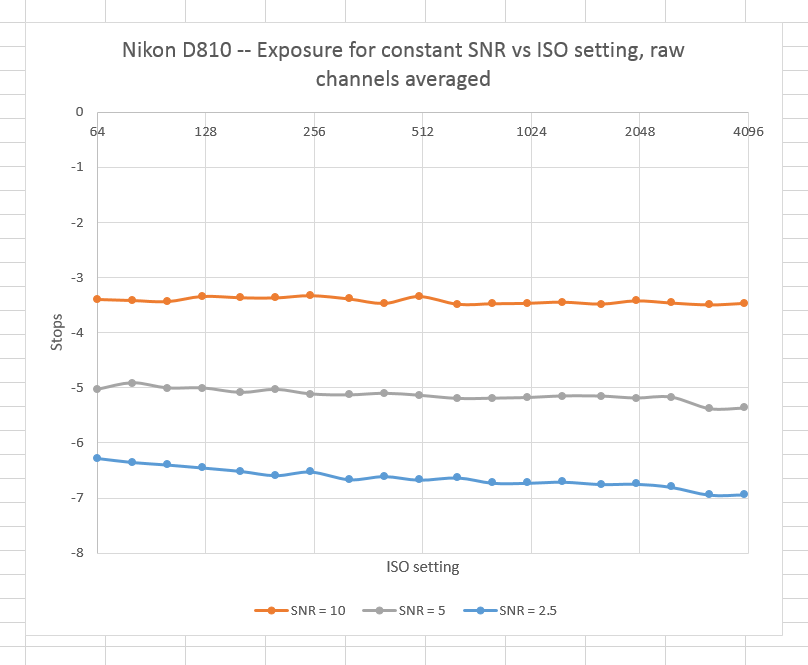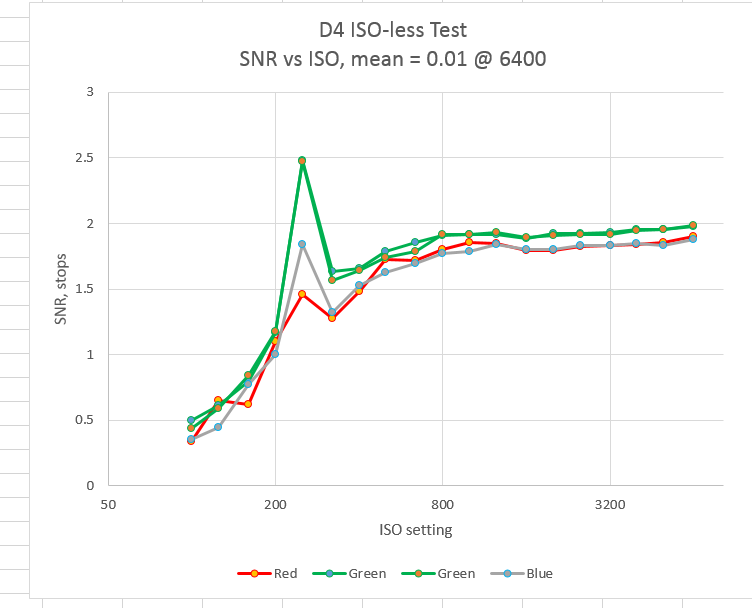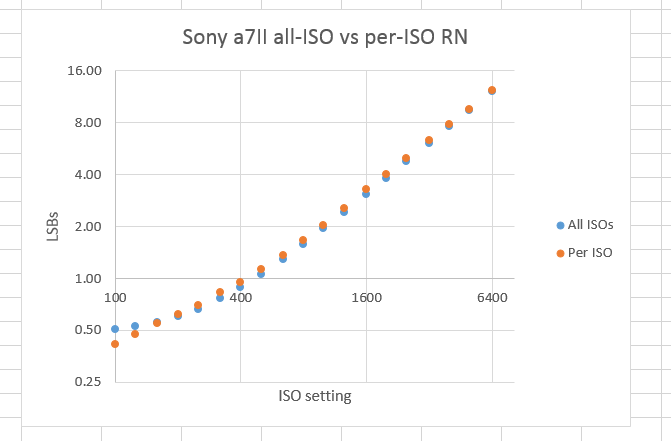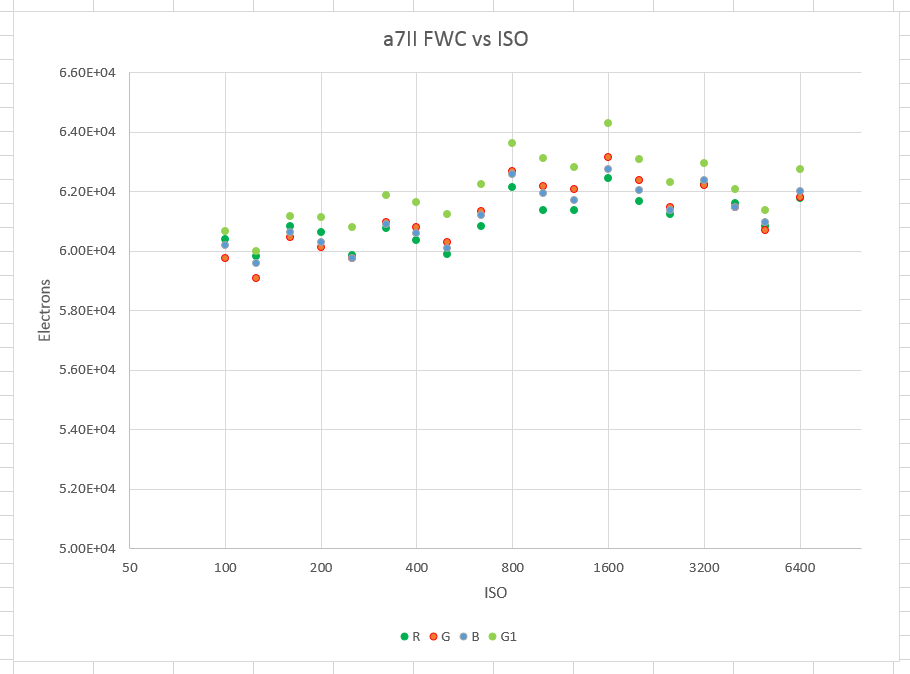For the past few days, I’ve been reporting on the “ISOlessness” of three cameras — the D4, D810, and alpha 7II — using a metric that I devised which, given an ISO range and a shadow level, returns the signal-to-noise ratio (SNR) of that level at the highest ISO in the range and at all the… [Read More]
D4 and D810 ISOlessness
I went back to the D4 and D810 data sets and ran the ISOlessness test on them without any data set scrubbing. Here are the results with a target mean of 0.01 for ISO 6400 for the D4 and ISO 4000 for the D810 (the tested ISOs are two-thirds of a stop apart because the… [Read More]
Sony a7II ISOless testing
I have developed a test for “ISOlessness” as part of the photon transfer analysis program. The test is described here. Here’s a summary: You specify the highest ISO that you wish to consider, and what the mean signal level should be at that ISO as a ratio to full scale. For example, if you’re interested… [Read More]
Comparing two a7II models
Yesterday, I reported on modeling the a7II at each ISO. Earlier, I modeled the camera over the same ISO range. The difference is that the first method yields a series of read noise numbers, one for each raw channel at each ISO, while the second method produces two read noise numbers for each channel, which… [Read More]
Modeling the a7II one ISO at a time
In the post before last, I modeled the Sony a7II over a range of in-camera ISO settings, and reported on the results. Today, I’ll show you what happens when you model the camera one ISO at a time. This is a much simpler task, aside from the fact that you have to do it over… [Read More]
- « Previous Page
- 1
- …
- 220
- 221
- 222
- 223
- 224
- …
- 384
- Next Page »




